#03: How I Overcame Trauma through Habits, Strength Training, and Therapy
2024 in Review: Overcoming Challenges and Building Strength
Last year, I stayed incredibly consistent with my habit tracking, laying the foundation for 2024. A challenging initiative at work and meticulously planned days kept me well-focused while navigating significant personal challenges. Amid it all, the news of my job promotion brought me immense joy. But the joy was short-lived.
In mere seconds, life delivered an unexpected blow. My heightened emotions of joy dissolved through an unimaginable harrowing experience. It broke the home I built away from home like a fragile castle, pulling me back into the deeply traumatizing events I had been trying to escape since childhood. Lost in a whirlwind of endless thoughts about the chaotic events, my mind froze, and my body remained paralyzed in shock for days. The terror-filled moments shook the foundation of the faith, trust, beliefs, and values I had carefully built over the years. The weight of confusion and despair left me unable to eat, sleep, or move.
The healing seemed very hard, but It needed to get started somewhere. Nothing matches the care, comfort, and love shown by our parents through the way they speak, act and set the right example for us time and again. I decided to return to them and traveled back to my village.
Life in village
In 2006, I left my village and moved to the city for higher studies. As the years passed, I became less inclined to spend time in my village, rarely visiting for more than 15 days a year.
Returning to the village after so many years, and spending a month during the hot summer, came as a surprise to my family. Their genuine joy touched me deeply and offered a temporary relief. The lush green fields near home, the simple conversations, the open air, and the gentle workouts gradually helped me get out of bed and back to my daily chores in March.
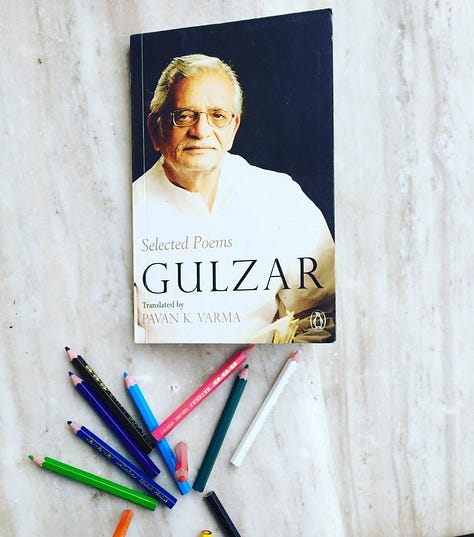

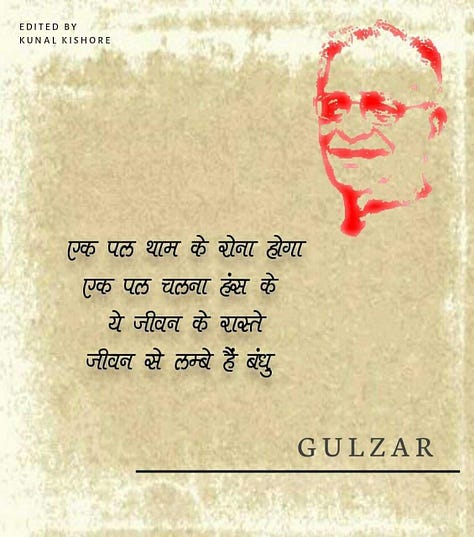
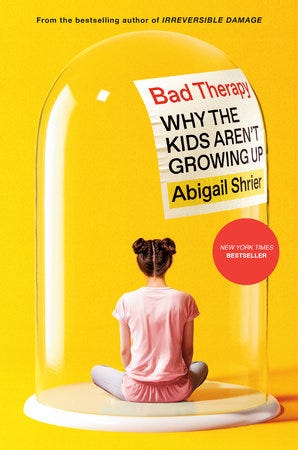

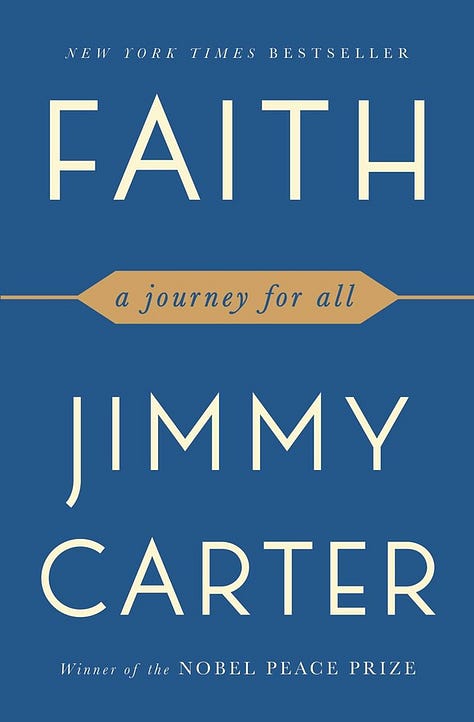
Self-reflecting on my village stay:
I sensed a magical touch that was powerful enough to soothe the mind and soul with gentleness. The simplicity of life, the lush greens, and the unhurried pace around me created space to breathe.
Reading books opened the door to new perspectives.
Back to Bhubaneswar
I returned to BBSR towards the end of March, feeling a bit better. To keep myself occupied and avoid spiraling, I prepared a list of habits to follow throughout April. However, healing doesn’t happen by simply staying busy. I crashed often. Despite my best efforts to stay busy, the events would flash through my mind, and the same cycle of painful experiences would repeat. Even when I tried talking to myself, narrating the event from start to finish felt almost impossible.
This is how April went by. Through the ups and downs, I managed to track my habits better than in March. I focused on eating well, exercising, meditating, and journaling regularly.
Books became a quiet refuge during this time. Without tracking, I still found myself finishing Cricket World Cup, Faith (continued), Azadi, Alph Shah’s book on democracy, and Deep Focus.
Self-reflection notes
Journaling helps in healing, though only in parts.
Regular meditation practice doesn’t necessarily shield you from emotional downturns.
When the mind is unwell, meditation feels harder—it takes longer to focus. But with persistence, the mind eventually begins to calm down
The confrontation
Intentionally harrowing actions by others must be called out and confronted. Though it is not easy, it is necessary. People should be held accountable for their behavior.
Through many ifs and buts, I confronted the fear and the person to release another emotional burst. It was long overdue. Yet, the burst didn’t surface as anger but as silence, sadness, and disappointment. Since I started meditating, the anger within me has faded, and this aspect of meditation hasn’t felt entirely right to me. More than anger, constantly putting myself in other people’s shoes compels me to bypass the anger, which eventually suffocates me in the long run. Even though the confrontation left me feeling a little lighter, it also drained me both physically and mentally after a few days.
I traveled back to the village for a week to help myself get back on track, again. June was all about pushing my mind to stay committed to habits, even when it resisted.
The Breaking Point
Despite my best efforts in strength training, meditation, reading, and journaling, the healing process felt stagnated. Commitment to work forced me to confront triggering points every week to get tasks done. It felt like sketching beautiful drawings only to erase them completely. My mind oscillated between constant highs and lows, trapped in a fixed rectangular channel.
Amid this wreckage, my mind wandered in search of the next step.
At the same time, I began experiencing difficulties presenting ideas cohesively and often forgot words while speaking. Irregular sleep patterns further worsened my condition, with my average sleep duration dropping to just 3 to 4 hours by this point.
Reaching Out for Help
As I sensed my performance might be affected moving forward, the next logical step was to share my emotional state with my manager at workplace.
However, speaking about the events felt incredibly difficult. After much hesitation, I reached out to Siva, who suggested seeking help from Trijog, a platform for mental wellbeing.
Some snippets from the conversation:
"If you find it difficult, remember that Virat Kohli, one of the best cricketers of today’s era, has personal coaches. The entire Indian cricket team relies on specialized coaches for every department."
"While friends can provide support, seeking professional help is often more effective. You’ll be speaking to a third person, and at worst, it might not work—but there’s no harm in trying."
"When the mind begins to wander, it’s better to address it early, before it becomes strong enough to take over."
Therapy sessions
As the next step, I reached out to Trijog and booked appointments with Neha Mam. (Shoutout to Trijog for making the process seamless!)
Being new to such a setup, Neha Mam made me feel extremely comfortable during the history-taking session. Despite multiple pauses and gaps in my sentences, I was finally able to narrate the events—overcoming the first major hurdle I had been facing since March. The session exceeded the allocated time, but she was kind enough to extend it.
She recognized that I was in a traumatized state and introduced me to a cognitive therapy technique called ABCs (Action, Belief, and Consequences) from REBT.
What is REBT?
Quoting from the crash course sheet:
REBT theory says that it is generally irrational and self-defeating to get all worked up about someone else's behavior. The anger (or other form of emotion) is based on a faulty assumption, which is that the other person SHOULD behave in the way I want them to. If you think about it, what the other person SHOULD do is not necessarily what they DO do. This is a very important element of the equation- reality. They do what they do, and then I/you automatically get angry about it, and feel quite upset for a while- possibly very upset. It's like walking around with a big pushbutton on your forehead that says "Push here to aggravate". Is this a useful response to others' behavior? Probably not.
What is ABC (through example) ?
A. (Activating situation) I tried to do something and failed
B. (Irrational Belief I have about A) I must always be successful
C. (Consequences of believing B) I feel bad, depressed, etc
D. (Dispute the Irrational Belief in B) where is it written in stone that I must I always be successful?
E. (Effective new thinking to replace B) I would prefer always to be successful but let's be realistic- that isn't very likely, is it- so when I'm not successful I don't need to make myself feel bad.
Can you relate it to following scenario in your life?
I MUST NOT feel overwhelmed with responsibilities
People MUST not take me for granted
Other people SHOULD behave in the way I want
I SHOULD be able to have a drink
I NEED a drink ("NEED" is often interpreted as MUST HAVE- be aware of such invisible MUSTS)
I MUST NEVER display weakness
People who do bad things MUST ALWAYS be punished
The subsequent sessions guided me toward realizing how I had built rigid expectations around people’s behavior and overcoming them through a flexible mindset.
Some other pieces of wisdom that I received in these sessions were:
People often exhibit their value system, which helps build our trust in them. However, there is always a possibility that they may deviate from it, leading us to question, How could someone do this?—and the mind begins to spiral in confusion and doubt.
Trusting people is a good quality, but keep your guard on. Always.
We share our vulnerabilities with our close ones. Protecting those vulnerabilities is not their responsibility. (We think they MUST/SHOULD protect it)
Kindness is a good virtue, but taking it to the extreme level is self-damaging.
Both the Meditation practitioner and the therapist also take the help of the therapy.
These wisdoms gave me a closure that I had been searching through the books since March.
Self-reflection Notes
The wisdom from the therapy sessions will make you feel as if you know those things. But when someone else tells you that wisdom from your context, it makes a lot of sense and puts a sense of validation within you.
When we have resources to hire professionals, we should do that. The learning and healing become exponential as we travel on a guided path.
Enrolment into Fittr - Training with Nidhi Mam
By the end of July, I had lost nearly 5–6 kg. Losing weight usually makes me feel very sensitive, and psychologically, I never feel good about it. Dropping below my threshold weight is naturally painful for me. Even with my best efforts, I could barely gain back 1 kg.
Realising I needed professional help, I reached out to Nidhi Mam from Fittr around the same time I connected with Neha Mam at Trijog. The reason was simple—I wanted support for both physical and mental well-being, as they are deeply interconnected.
Trivia:
Fittr was formerly known as S.Q.U.A.T. Interestingly, a colleague of mine at Muvi, in 2015-16 to design a few sample screens for their mobile app. Looking back at those designs now, I can’t help but laugh! But at the time, I took the task with excitement, treating it as part of my daily UI practice.
Nidhi Mam prepared both a diet and workout plan after understanding my challenges. After 1–2 weeks, I found out that my HRV was very low, a clear sign of being under constant stress.
Some of our initial goals were:
Gaining back the lost weight (while reducing fat)
Increasing the HRV
Improving sleep
Lifting good weights
In the next three months [Aug, Sep, Oct], I probably just closed my eyes and gave my best shot, largely sticking to what Nidhi Mam asked me to do. She never failed to do constant check-ins on my diet, workout, and emotional well-being. She would regularly inquire about how I performed each exercise. Many times, I recorded my sessions and sent them to her to check my exercise forms.
In every check-in, she helped me understand many good concepts, such as:
How to breathe correctly (when to inhale/exhale)—highly important for preventing injuries.
How to do resistance training effectively.
Box breathing techniques and how they compare to regular meditation (it spikes your HRV quickly).
Why drinking water first thing in the morning is important.
And probably some more. :)
In these three months, I was probably at my best with workouts. I saw myself progressing week by week. All thanks to Nidhi Mam.
Flexing
I started with a 10kg deadlift on each side of a barbell. By the end of October, I was lifting 22.5kg on each side, totaling 65kg—surpassing my initial target of 50kg.
Fat bulges from my back vanished.
Average HRV spiked from 20 to the 35–40 range. [Still a long way to go.]
Resting heart rate dropped from 70–80 to 60–65.
Sleep improved from 3–4 hours to 6.5 hours and then to 7–7.5 hours.
Going back to Sketching
Along with diet, workouts, and therapy sessions, I returned to sketching. It helps me focus and sharpens my attention to detail skill. Constantly working with tiny lines and curves at a precise level is what makes it so effective.

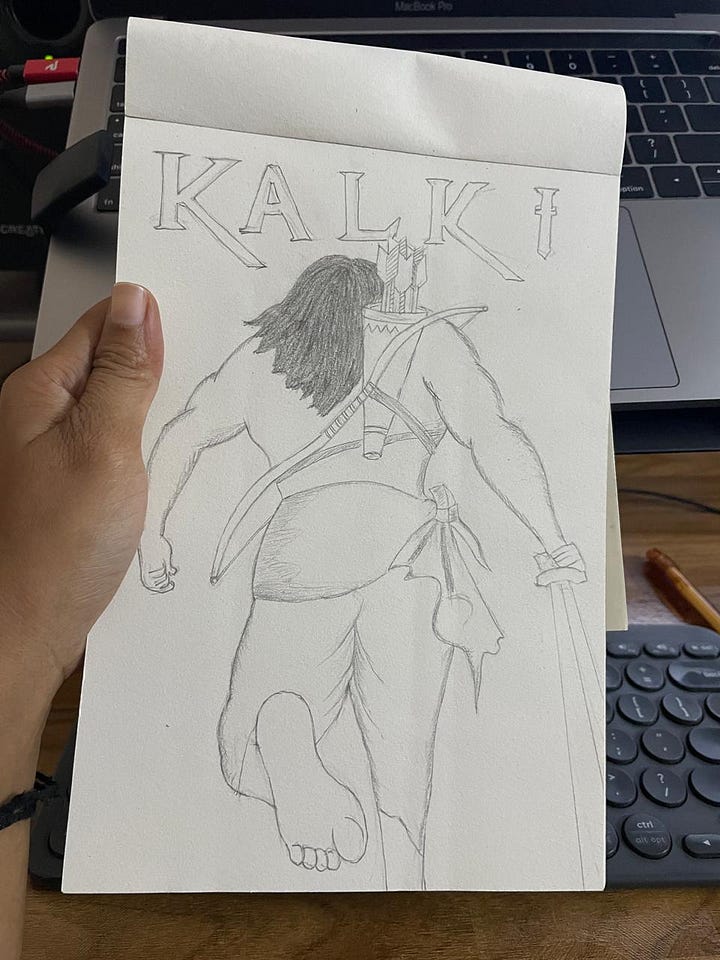
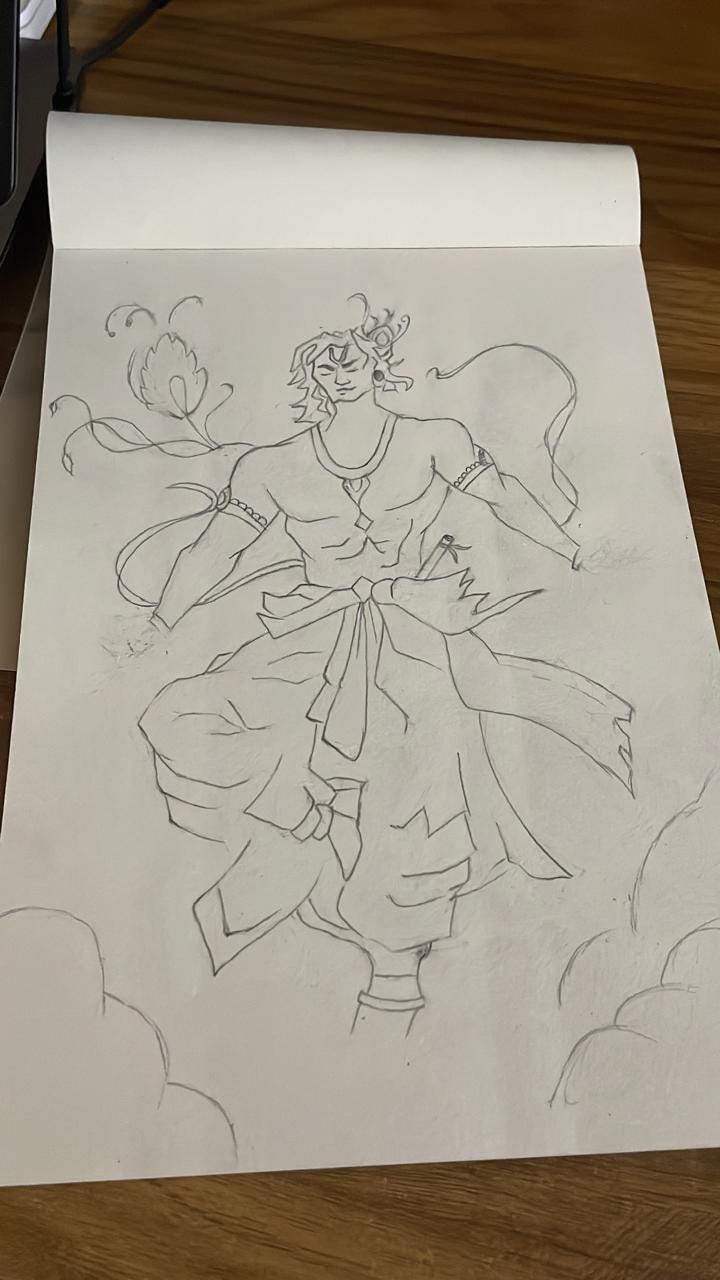
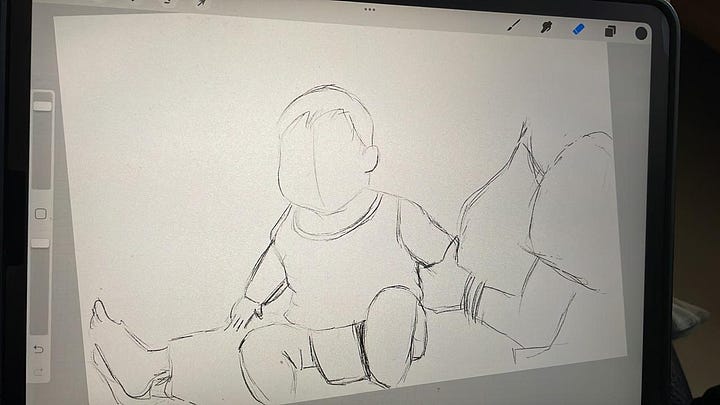
Healing, Falling Sick, and Taking a Sabbatical
With occasional thoughts drifting here and there, I can safely say that by the end of October, I was doing a lot better.
As a designer, I’ve learned that God is in the details. As a human being, I’ve realized that God is also in resilience.
In November, I enthusiastically participated in the Fyle health challenge and did amazingly well in the first week. However, I grappled with fever and cough throughout the month, often losing my gym streak and strength.
Balancing physical and mental challenges while recovering from the sickness, I decided to take a sabbatical in December. Along with that, I also paused habit tracking to give myself some space.
What am I doing during my sabbatical?
✅ Slowly easing back into workouts and diet.
✅ Finished the Commentary on Mandukya Upanishad by Swami Sarvapriyananda.
✅ Learned how to play chess—and lost plenty of games on Chess.com.
✅ Gained a better understanding of stock analysis.
✅ And finally, wrapped up writing this article. :D

What’s next? Goals for 2025
Practicing emotive behavioural therapy more
Ambitious 100kg deadlift
Car driving
How to sell products
Read more books on digital product
Trading
Write more
Visit Norway
If you’re here and reading this, thanks for sticking around! This is impressive—maybe even more than my 65kg deadlift. :D
Thanks to Dinni for encouraging us to write self-reflections for the year in the habit tracking group.
And a big thanks to everyone who tolerated my behaviour through all my chaos and chose to ride out the storm with me.







